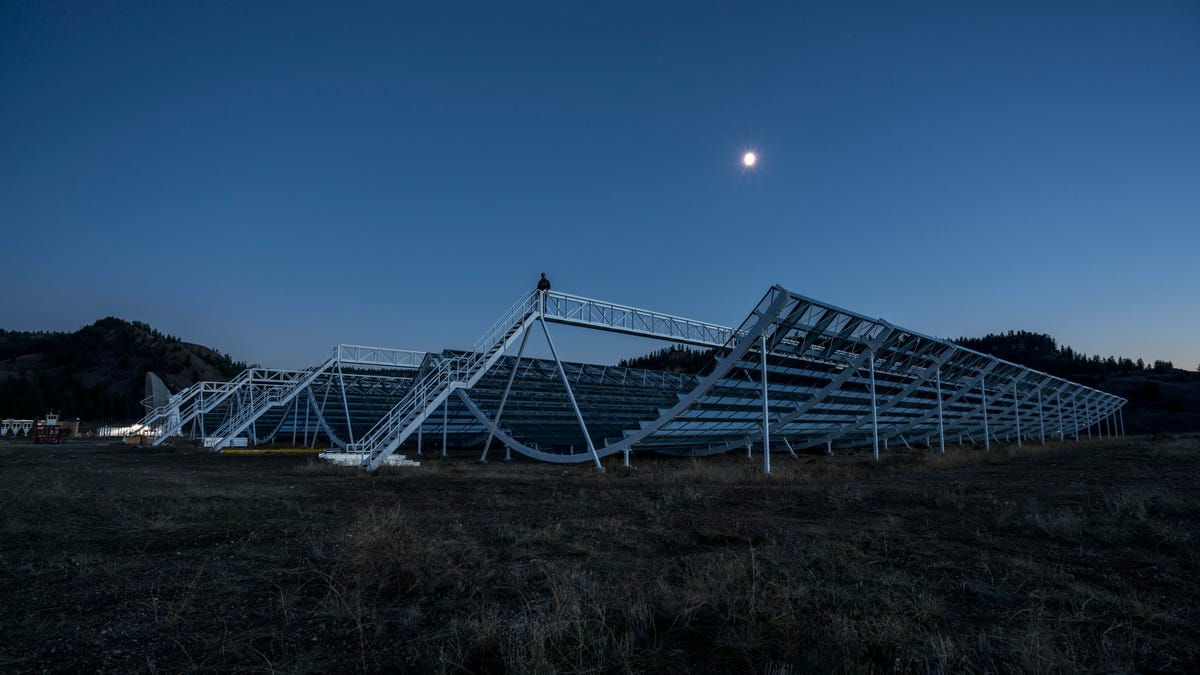New radio telescope picks up mysterious signal from space
The observatory in Canada may have already found clues to one of the newest mysteries in astronomy.

The CHIME radio telescope at dusk in British Columbia.
A new radio telescope in Canada is doing its job picking up mysterious signals from deep space known as "fast radio bursts" (FRBs).
The Canadian Hydrogen Intensity Mapping Experiment (CHIME) in British Columbia detected the first-ever FRB at frequencies below 700 MHz on July 25, a signal named FRB 180725A.
As you might guess, FRBs are milliseconds-long bursts of radio emissions that come from some unknown source across the universe. They're one of the newer cosmic mysteries around, having been first detected only about a decade ago. Possible explanations include bursts from magnetars, exploding black holes, and yes, highly advanced alien civilizations.
CHIME has been operating for less than a year and is designed to gather data on FRBs and other unanswered questions in astrophysics. The detection of FRB 180725A is very preliminary at this point. It was announced in an online "Astronomer's Telegram" post intended to encourage other astronomers "to search for repeated bursts at all wavelengths."
The announcement also notes that additional FRBs have been found in the past week at frequencies as low as 400 MHz and early indications suggest they aren't coming from known sources on Earth.
So far only one FRB has been observed repeating and researchers say whatever is sending that signal across the universe is stupendously powerful.
It's early days for both the study of FRBs and this FRB in particular. CHIME and other observatories will be keeping an ear to the sky for more clues to help solve the mystery.
Fight the Power: Take a look at who's transforming the way we think about energy.
'Hello, humans': Google's Duplex could make Assistant the most lifelike AI yet.

